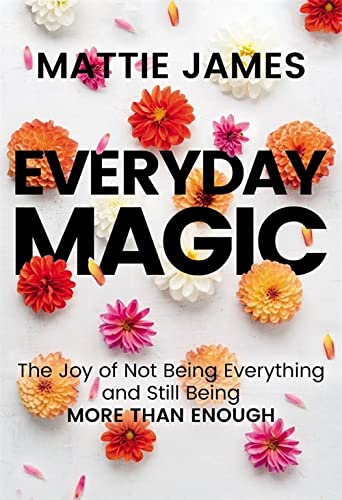
Because there are so many moving parts, having a plan is a necessity.
There are always these random days when the kids are out of school.
Today my girls, Maizah (10) and Caliana (7), don’t have school because it’s an asynchronous day. So they have schoolwork to do, but don’t have to go to school physically. And as I write this, it’s Monday, so their brother, Christian (5), does have to go to school.
All of this was in my calendar—both physically and digitally—because I instantly get overwhelmed when I get surprised by random days off from school.
One thing I stand ten toes down on to avoid overwhelm is my Sunday Reset Routine. (I talk about my Sunday Reset Routine in depth on this episode of the podcast.)
It allows me to prepare for the week, so it’s productive, purposeful, and enjoyable. I like my life. And I assume that you like yours—or at the very least, you want to.
You deserve to enjoy your life, no matter what stage of life you’re in or how much is on your plate.
But joy is a choice. It doesn’t happen when you wait for someone to give it to you. It’s yours, so you have to use your authority to take it.
The best part of the Sunday Reset Routine is that it isn’t just about tasks – it’s about honoring the culture of our family.
The kids ask what’s for lunch tomorrow and help get their snacks together for school.
They pull out their clothes for school the night before.
I finalize the weekly meal plan and look over the calendar to ensure nothing that matters has been overlooked.
Chris and I touch base to ensure we’re on the same page.
Chris or I will clean out the car so it’s orderly for school dropoffs and pick-ups.
We also make sure that everyone has what they need in their bookbags to avoid Monday morning mayhem.
Because this week is also the start of a new month, I really like to lock in on my Thinking Time and create an overview for the month, then plan my week. Doing this helps me avoid being overwhelmed and having random surprise interruptions in my schedule.
Why I Plan for the Month
Earlier this year, I was so focused on having a vision for the year that I forgot to make a cohesive plan for the month. Getting back on track after the holidays is always hard, but one Wednesday afternoon, I remembered why it was so important.
The Time I Totally Forgot an Important Date (And What It Taught Me)
On this particular afternoon, Chris and I had meetings and deadlines to get to so we asked our dads to drop off and pick the kids up from school. This allows us to have anywhere from 30 to 90 more minutes of uninterrupted time to get work done, which is such a tremendous help.
Because we had passed on the school commute, I thought that we were good to go.
We. Were. Not.
That afternoon, Maizah had a Lunch and Learn where she and her classmates were to give a virtual presentation of the school project they had been working on for the last few weeks. It was 12p ET. 12p came and went and at 3:15p I just hear Chris yell, “I blew it.” Chris is fantastic at keeping up with all of the school events going on with the kids, but we both forgot about Lunch & Learn.
“I totally forgot about Maizah’s Lunch & Learn,” he said disappointed.
“I can’t believe we missed that. We just talked about it last night,” I said in disbelief couple with the same disappointment.
The worst part was that Maizah came home super bummed out that we weren’t there to see her presentation. It was such a sound lesson for me on why planning our month was so useful to our family as a whole.
It isn’t just about productivity. It is about being there for each other.
Planning isn’t just about keeping track of tasks—it’s about creating space for the things that matter most. When I have a solid plan, I’m not just reacting to life as it comes; I’m leading it with intention. I get to decide how my time is spent, and that’s powerful. It also means I have the capacity to be present for my family, my work, and myself without feeling like I’m constantly playing catch-up.
How My Mom’s ‘Brains’ Shaped My Planning Style
Growing up, my mom always had a datebook or planner she wrote in consistently.
My mom always approached her day on offense, not defense. She seldom complained because she always entered her days prepared. Like, I could call Mommy right now and ask her what she has going on next Thursday, and she could walk me through her. The brilliant part was that she was also flexible enough to move things around like puzzle pieces to make it work.
She relied on her to-do list, which she calls “her brains” (she still calls it that to this day), without sacrificing flexibility, and I can’t remember a time when she didn’t do that. I saw how she used planning as her superpower in her everyday life. And now I try to keep that same energy with my own life.
Thanks to Mommy, I’ve always had a daily or weekly planner. Nowadays, I use a daily planner since I have to keep up with my schedule, Chris’ schedule, and the kids’ schedule. (I currently use the Everyday MAGIC planner. It’s undated and gives you room to write and think every week. Plus, it’s pretty.)
While it’s fun from an aesthetic standpoint to have a pretty planner to claim, I enjoy the function of a purposeful planner that keeps the tabs in my head closed and my schedule at the front of my mind.
How I Create an Overview of the Month
A few days before the first of the month (even if it’s on the last day of the previous month), I like to create an overview of the upcoming month. This isn’t about filling every single day with plans—it’s about getting a bird’s-eye view of what’s coming up so I can be proactive rather than reactive.
Step 1: Brain Dump Everything
Before I even look at my planner, I sit down with a blank page and write out everything I can think of that’s coming up—big and small. This includes work deadlines, birthdays, appointments, social events, kids’ school functions, and anything else that might take up time or mental energy.
For instance, this upcoming month, here’s what we have going on:
- My sister-in-law is hosting a Mother’s Day event at her house
- It’s my grandmother-in-law’s birthday
- Easter
- Caliana and Christian have a doctor’s appointment
- Chris serves at church
- I’m having lunch with a colleague
- Content deliverables for three brand campaigns go live
And that’s just off the open tabs in my head. Once I do this brain dump, I start categorizing things into personal, family, and work-related tasks. This helps me see where my focus needs to be and what needs the most attention.
Step 2: Cross-Check with Correspondence
Once I have my brain dump, I go back and check my emails, text messages, and notes to ensure I haven’t forgotten anything. Sometimes things get mentioned in passing that never make it onto my calendar, so this is my time to catch those.
- Correspondence
- Conversations via email or text
- Notes from a recent meeting
- Newsletters from the kids’ schools/teachers
- Updates from the kids’ extracurricular activities
- Notifications from our church
This step ensures that I’m not blindsided by a “forgotten” commitment later in the month.
Step 3: Plan for Priorities
Not everything that ends up on my list is equally important. This is where I take time to identify my non-negotiables—the things that must happen no matter what.
For me, this includes:
- Family time (weekly outings, movie nights, or Sunday dinners)
- Business deadlines (brand partnerships, content launches, and meetings)
- Personal care (workouts, quiet time, journaling)
If I see that I’m overloaded in one area, I make adjustments before the month even starts. This is also when I make sure I’m leaving space for rest and spontaneity.
How I Ensure What I Have Going On
Beyond just writing things down, I have a system to ensure I don’t forget anything. My process is broken into three categories:
- Correspondence
- Conversations via email or text
- Notes from a recent meeting
- Newsletters from the kids’ schools/teachers
- Updates from the kids’ extracurricular activities
- Notifications from our church
- Communication
- Conversations with Chris and/or the kids in our family meetings
- Virtual or physical meetings (personal or professional)
- Face-to-face or phone conversations (kids’ teachers, PTA, church small groups, community organizations, HOA, etc.)
- Confirmation
- Follow-up or automated phone call
- Automated email/text from the doctor’s office
- Reminder notices from kids’ school apps
These three categories allow me to review and ensure I’ve caught everything going on for me, Chris, and the kids—plus whatever we’re involved in for the month. Mainly because right now is toward the end of the school year, there are a lot of moving parts.
The Final Step: Filling in the Gaps
Once I have my monthly overview, I use it as a reference for my weekly and daily planning. This makes my Sunday Reset so much smoother because I’m not starting from scratch—I already have a clear idea of what’s coming up.
Creating the monthly overview usually takes me about 60 minutes if I’m uninterrupted. Once my monthly overview is complete, I simply fill in the gaps week to week, day to day.
The goal isn’t perfection—it’s peace. Having a plan doesn’t mean life won’t throw surprises at me, but it does mean I’m better prepared for them. And that makes all the difference.


